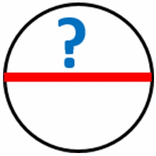Table 1.
Important parameters of microwells that are effective in the spheroid generation.
| Parameter | Properties | Notes | 3D printed fabrication | Conventional lithography fabrication |
|---|---|---|---|---|
|
Microwell shape (cross-section)
|
Square, hexagonal, circular and triangular | Some reports showed that hexagonal and circular shapes are better than others to form founded spheroid6,27,36,37 | ✓ | ✓ |
|
Microwell diameter
|
100–800 µm | Some reports evaluate the well diameter on spheroid size27,38–40 | Less than 200 µm performed only with a high-resolution 3D printer2–4,41 | ✓ |
|
Microwell depth
|
100–1000 µm | The appropriate depth for making a spheroid of the desired size is determined based on the diameter24,27,38,39 | ✓ | The difficulty for fabrication depth more than 200 µm7,29 |
|
Microwell bottom
|
V-conical, V-spindle, U-shape | Help to cell aggregation, form a single and rounded spheroid29,30,37,42,43 | Only with a high-resolution 3D printer2–4,41 | × |
| Flat-bottom | Simple fabrication40,44 | ✓ | ✓ | |
|
Microwell type
|
Decreasing the cross-section with increasing the depth (conical, spindle, reverse pyramidal) | Help to cell aggregation, form a single and rounded spheroid24,28,45,46 | Only with a high-resolution 3D printer2–4,41 | × |
| Fixed cross-section (cylindrical, hexagonal prism, and cubic) | Simple fabrication40,44 | ✓ | ✓ |





